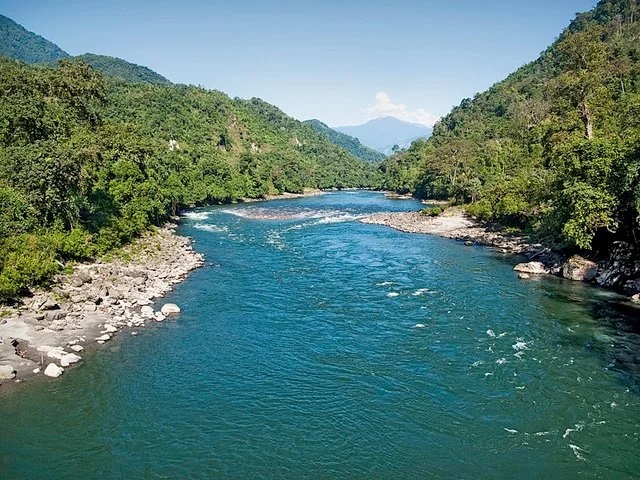Destinations with high tourism Potential - Subansiri River
Destinations with high tourism Potential - Subansiri River
The Subansiri River (Chayul Chu in Tibet) is a trans-Himalayan river and a tributary of the Brahmaputra River that flows through Tibet's Lhuntse County in the Shannan Prefecture, and the Indian states of Arunachal Pradesh and Assam. The Subansiri is 442 kilometres (275 mi) long.
Tsari Chu known as Lensi River in Arunachal Pradesh rises near the village of Chosam in Tibet and flows east for about 25 miles till the town of Migyitun, where it turns south. It merges with the Subansiri at Gelensiniak. The district of Tsari, consisting of the Tsari Chu valley and its vicinity, is considered holy ground by the Tibetans. No animals are killed and no food is grown in these areas, with the exception of Migyitun. The holiness comes from the Dakpa Sheri mountain peak at the centre of the Tsari district, considered the home of the Buddhist Tantric deity Demchok (Chakrasamvara) and his consort Dorje Phagmo (Vajravārāhī). The pious Tibetans used to carry out a wide circumabulation (called rongkor or "ravine circuit") around the mountain once every 12 years, during the monkey year. They traversed the valley of the Tsari Chu river until its junction with Subansiri, and returned via the Subansiri and Yume Chu valleys.
The 1950 Assam–Tibet earthquake caused landslides blocking the flow of Subansiri at Gerukamukh. After three days the blockade broke causing a massive flash flood. The Lower Subansiri Dam or The Lower Subansiri Hydro-Electric Project is an under construction on the river. It is the home of golden Mahseer which roughly translates as mahi – fish and sher – tiger, and hence is also referred as tiger among fish. It is a large cyprinid and known to be the toughest among the fresh water sport fish. The body colour of an adult Golden Mahseer is golden on dorsal side and fins are reddish-yellow. Also the fish is characterized by their large scales and thick powerful lips with relatively longer barbels (sensory hair-like organs in front of the mouth)






